
story
BE ADVISED: On Thursday, January 22, La Brea Tar Pits will be closed for a private event. We will reopen Friday, January 23. Please contact us at info@nhm.org or 213.763.DINO if you have any questions.
BE ADVISED: On Thursday, January 22, La Brea Tar Pits will be closed for a private event. We will reopen Friday, January 23. Please contact us at info@nhm.org or 213.763.DINO if you have any questions.
Kimberly Morales Johnson | Educator, Gabrielino Tongva San Gabriel Band of Mission Indians
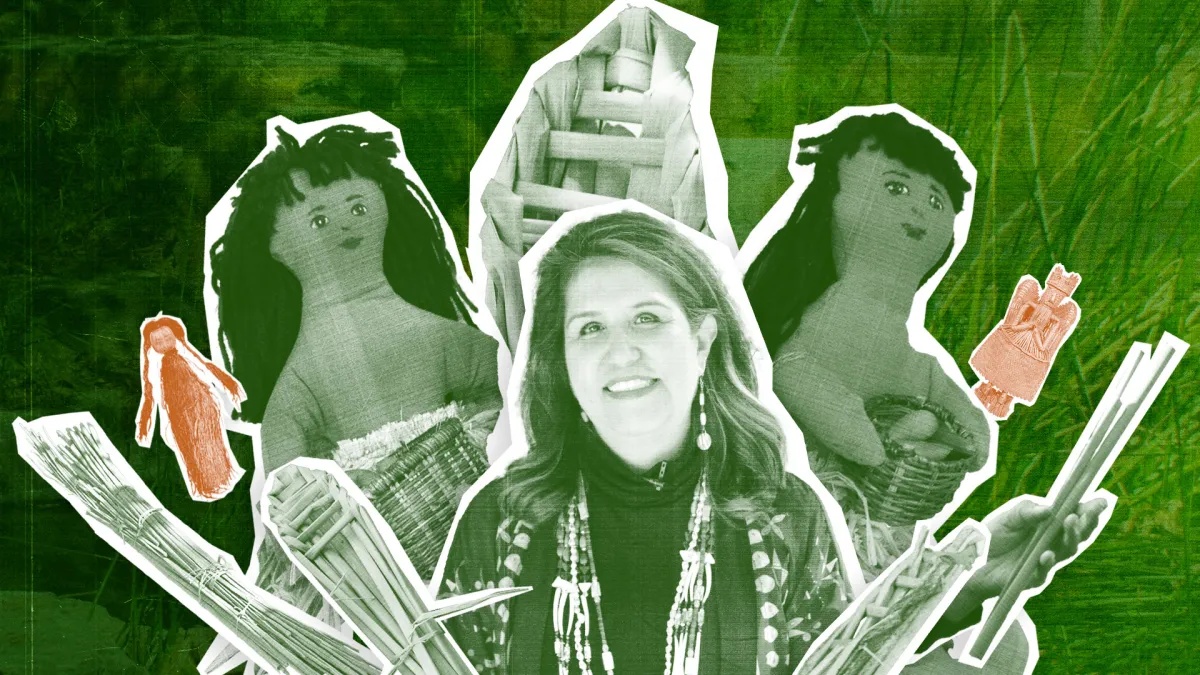
Published October 31, 2023
"Having people knowing more about us and speak the Tongva name and speak about the Gabrieleno people, it’s a way of uplifting the voices that have been erased for generations…The tule doll connects us to the earth a little bit deeper and its part of passing on our traditional knowledge to the next generation."
Kimberly Morales Johnson is part of the thriving and vibrant Gabrielino Tongva San Gabriel Band of Mission Indians whose ancestral lands encompass the Los Angeles Basin and various Channel Islands. Morales is an educator by profession and currently pursuing her doctorate in Native American Studies. She uses her platform as an educator to promote knowledge and awareness of traditional foodways, oral traditions, and intergenerational knowledge.
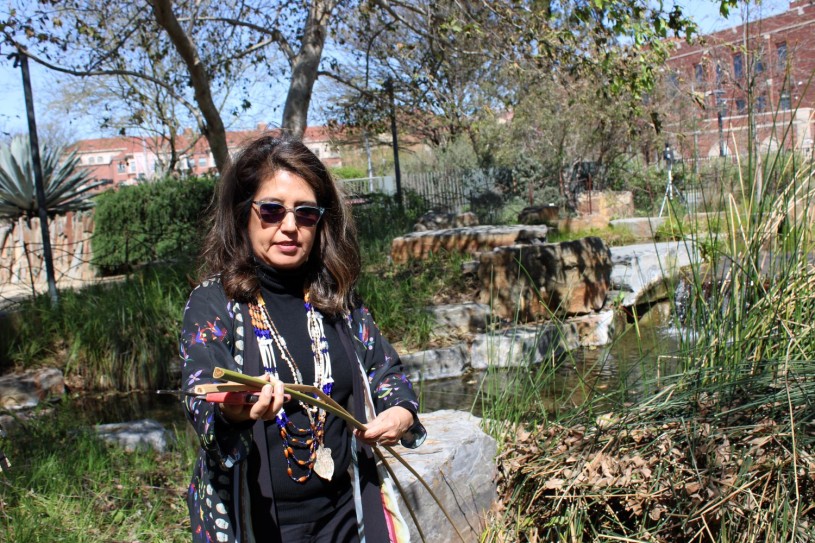
In this final installment of L.A. at Play: Dolls & Figurines, Morales Johnson graciously shares her ancestral knowledge on the making and meaning of traditional tule dolls. Click here to watch Morales Johnson explain her timeless connection to the city and lands of Los Angeles and the role of tule dolls in her culture.
Tule is gathered as a way to reconnect to Mother Earth. When Mother Earth has an abundance it’s part of the caretaking to go back to Mother Earth to gather the gifts she’s given.
Tule, a type of sedge, is a tall plant that grows in shallow waters at the edges of ponds, lakes, and marshes and grows throughout California. Descendant communities throughout the state found tule useful for weaving its fibers into baskets, mats, thatched roofs, and dolls. Morales Johnson abides by the ancestral knowledge that tule is not simply a natural resource, but rather, it is a plant relative. This familial relationship between people and the natural world engenders a greater respect for the natural landscape and the gifts it provides. It also underscores the most important aspect of creating a tule doll: the passage of knowledge and traditions from one generation to the next.
When Morales Johnson weaves a tule doll, she brings into the act of creating both the memory of her elders and the promise of the future generations, namely her children Samantha and Seth and niece Ellie, who will continue to be bearers of proud and ancient traditions. Describing an experience when she went gathering tule with her daughter, Morales Johnson recalls discussing offerings to the tule with her relative, Auntie Barbara:
"We were talking about what gifts to give, and then my daughter, without any prompting, just started singing a song. Auntie Barbara said, ‘That’s it honey, that’s what I’m talking about. Give the plants your gift.' It was one of those moments where every time I go back to the tule, I can hear my daughter singing and I could hear Auntie Barbara being so proud of her connection to Mother Earth."
To partake in the making of a tule doll is to engage in a continuum of centuries of oral tradition derived from the voices of elders and ancestors. The knowledge of its creation, from the gathering to the weaving, allows for this practice to assume a lifespan like that of an organic being. If it is forgotten and not tended to, it will pass away and fade into memory. However, through the intercession of living knowledge bearers like Morales Johnson, the practice of weaving dolls continues to invigorate the next generation.
Reflecting on the lessons that making a tule doll can teach, Morales Johnson says:
"There’s this sense of pride in knowing that they have a connection to Mother Earth for generations…to see that reclamation of our culture coming back has empowered this next generation. But there were a couple generations who really had to fight to keep what we knew, and we have."
Click through the slideshow below to see highlights from the process of weaving a tule doll.
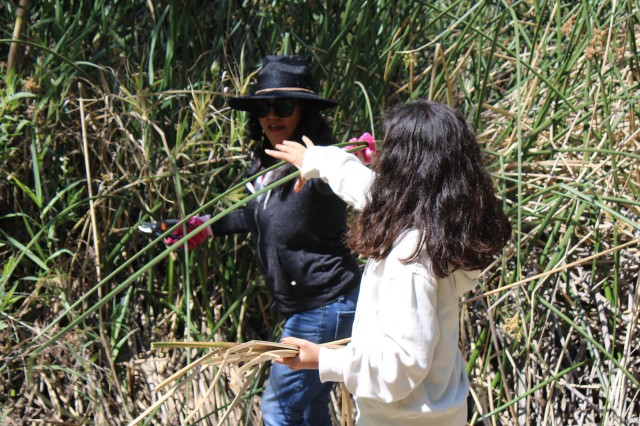
Natural History Museum of Los Angeles County
After an offering is made to Mother Earth, tule reeds of suitable length are gathered from a bountiful thicket.
Natural History Museum of Los Angeles County
After the tule is gathered and cut to length, it is soaked to make it more pliable for weaving.
Natural History Museum of Los Angeles County
Lengths of tule are formed into a cross then bent over each other to initiate the shape of the doll.
Natural History Museum of Los Angeles County
Morales Johnson twists and weaves the tule into a geometric form resembling a human.
Natural History Museum of Los Angeles County
The loose ends are tied up with a natural fiber, and the doll is complete.
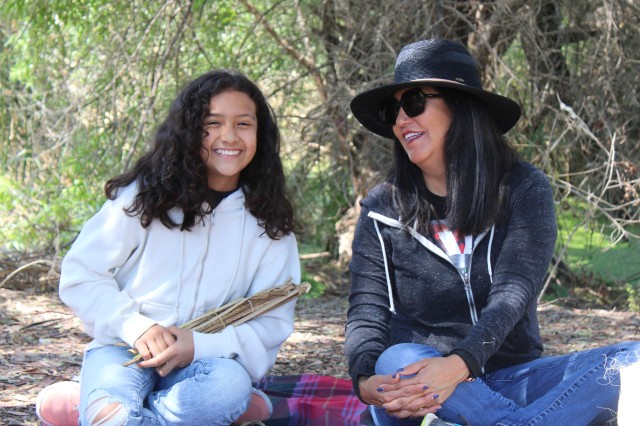
Natural History Museum of Los Angeles County
Ellie is pleased with the doll that her aunt helped her to create. She is the recipient of generations of ancestral oral tradition of the Gabrielino Tongva San Gabriel Band of Mission Indians.
1 of 1
After an offering is made to Mother Earth, tule reeds of suitable length are gathered from a bountiful thicket.
Natural History Museum of Los Angeles County
After the tule is gathered and cut to length, it is soaked to make it more pliable for weaving.
Natural History Museum of Los Angeles County
Lengths of tule are formed into a cross then bent over each other to initiate the shape of the doll.
Natural History Museum of Los Angeles County
Morales Johnson twists and weaves the tule into a geometric form resembling a human.
Natural History Museum of Los Angeles County
The loose ends are tied up with a natural fiber, and the doll is complete.
Natural History Museum of Los Angeles County
Ellie is pleased with the doll that her aunt helped her to create. She is the recipient of generations of ancestral oral tradition of the Gabrielino Tongva San Gabriel Band of Mission Indians.
Natural History Museum of Los Angeles County
To the core of our being we are human people, and dolls are a way of showing that...it's a connection of humanity and a connection of goodness to try and bring a smile to somebody's face.
The making of a tule doll affirms the core function of a doll: to bring joy. Throughout recorded human history, dolls have been created for the express purpose of being loved and cherished, and often, dolls were created with whatever natural material was readily available. As Morales Johnson demonstrated, the practice of creating dolls by hand is not one relegated to a bygone era. Cultures worldwide continue to use natural materials to create dolls; scroll through the photos below to see examples of other handcrafted natural-fiber dolls in the care of the Natural History Museum.
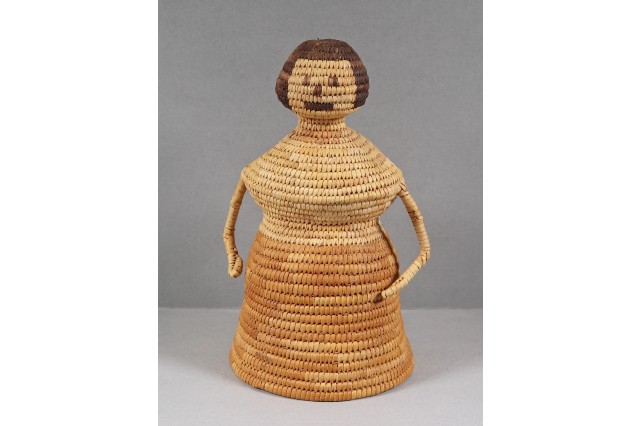
Natural History Museums of Los Angeles County, Anthropology Collection: Ethnology
This basketry doll made of yucca fiber was created by member of the Tohono O'odham (formerly referred to as Papago) Nation, today located in Arizona. It was collected between 1945 and 1950.
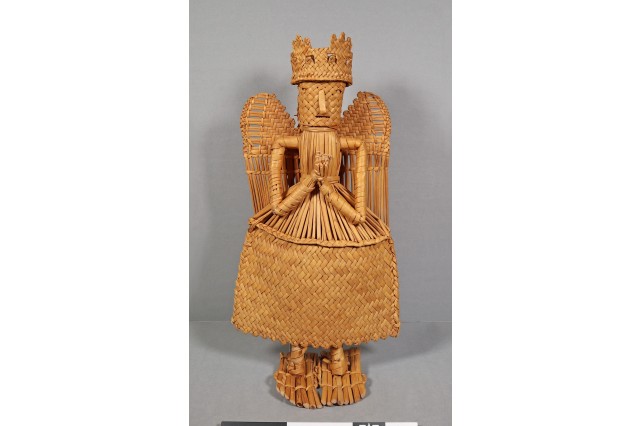
Natural History Museums of Los Angeles County, Anthropology Collection: Ethnology
This doll is also made of tule plant fiber and was created by a member of the Purepécha culture, an Indigenous group of people from from the Michoacán region of Mexico. It was brought to the Museum in 1952.
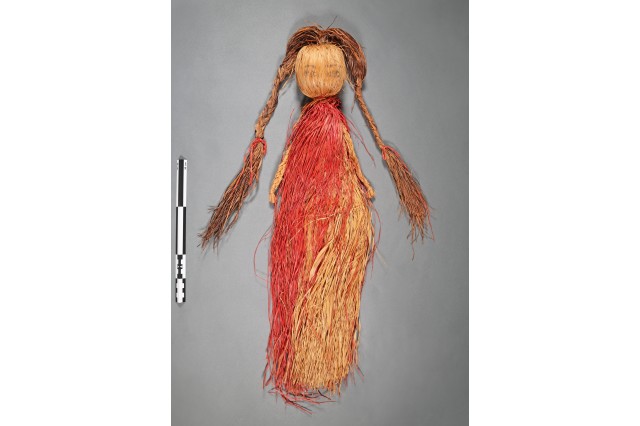
Natural History Museums of Los Angeles County, Anthropology Collection: Ethnology
This doll is made of shredded basswood and was made by a member of the Chippewa-Ojibwe (Annishinaabe) people. It was collected at the Mille Lacs Indian Reservation in Minnesota in 1965.
1 of 1
This basketry doll made of yucca fiber was created by member of the Tohono O'odham (formerly referred to as Papago) Nation, today located in Arizona. It was collected between 1945 and 1950.
Natural History Museums of Los Angeles County, Anthropology Collection: Ethnology
This doll is also made of tule plant fiber and was created by a member of the Purepécha culture, an Indigenous group of people from from the Michoacán region of Mexico. It was brought to the Museum in 1952.
Natural History Museums of Los Angeles County, Anthropology Collection: Ethnology
This doll is made of shredded basswood and was made by a member of the Chippewa-Ojibwe (Annishinaabe) people. It was collected at the Mille Lacs Indian Reservation in Minnesota in 1965.
Natural History Museums of Los Angeles County, Anthropology Collection: Ethnology
The L.A. at Play story is not complete without you! Share your creature, doll, bobblehead, or figurine story and follow the stories of the makers who are contributing to some of L.A.'s most iconic fandoms–tag us @NHMLA with #LAatPlay.
Explore More Stories of Dolls & Figurines